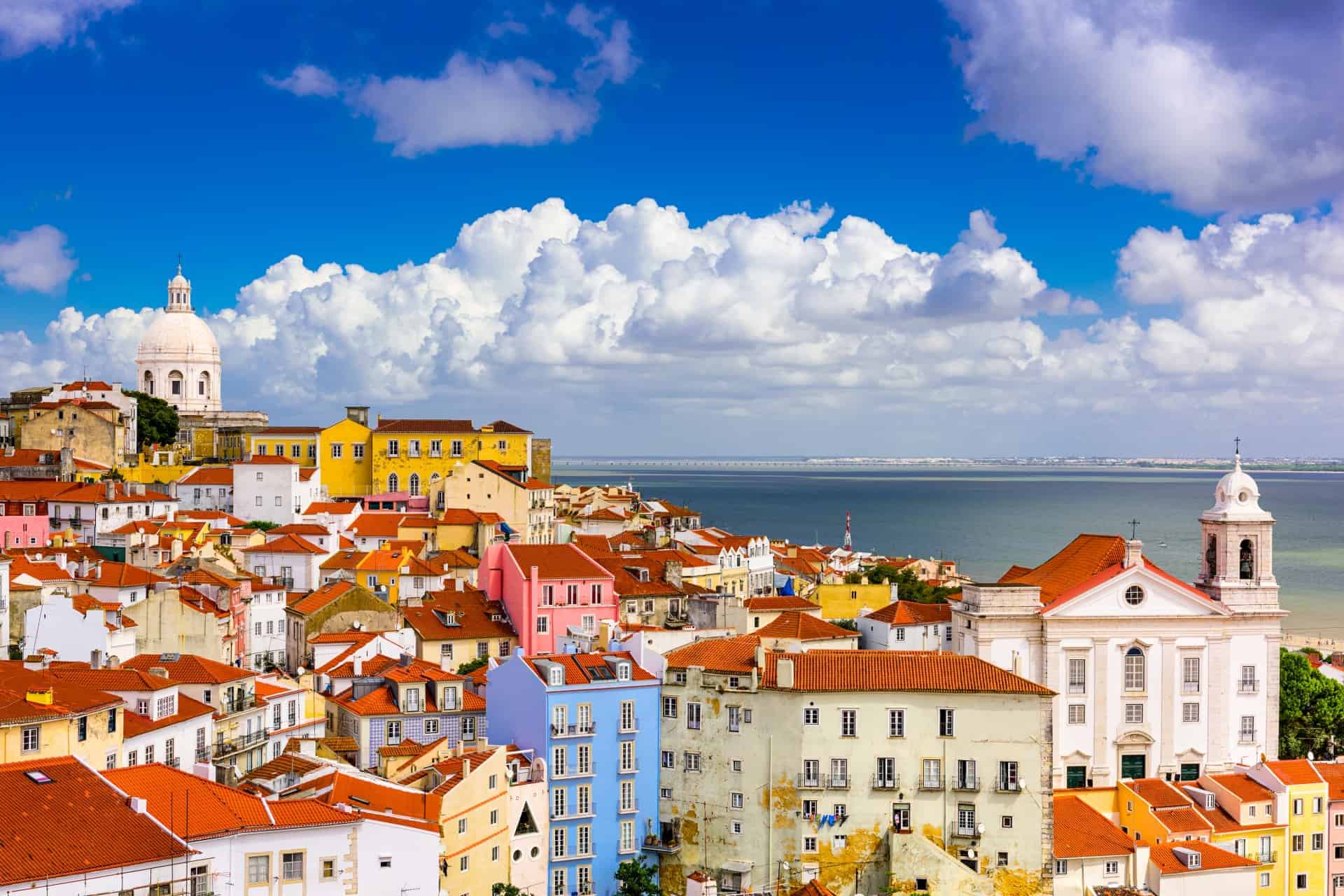
Alfama, Portugal
An Antipodean travel company serving World Travellers since 1983
Alfama, Portugal
Alfama is Lisbon’s oldest extant neighbourhood, built in the 8th century during the Muslim conquest of Portugal and neighbouring Spain. Under the Umayyad Caliphate, Lisbon became one of the largest cities in Europe. “Alfama”–from the Arabic al-Hamma, “public baths”–constituted the whole of the city in this period. Alfama is a warren of streets and alleyways on a hilltop facing the Tagus River, its labyrinthine layout a legacy of Islamic settlement. The city’s Umayyad rulers built town walls that still remain standing to this day. Moor rulers also enlarged Castelo de Sao Jorge (St George Castle), initially a small fortress.
Christians would retake the city in 1147 as part of the Second Crusade. However, unlike most of Lisbon, the area remains intact in its medieval form, having survived the great earthquake that destroyed most of Lisbon in 1755.
Overlooking Alfama and the rest of Lisbon is the hilltop Castelo de Sao Jorge, a royal castle until the 1500, when Manuel I moved to a bigger, more magnificent riverside castle (Paco da Ribeira) that mirrored Lisbon’s staggering new wealth in the Age of Discovery. Sao Jorge offers a great view of the city, but Alfama itself has other terraces (miradouros) which serve as lookout points, such as the Miradouro de Santa Luzia, which is near a church of the same name. Also nearby is the Museum of Decorative Arts (Museu de Artes Decorativas), housed within a 17th-century mansion.
For a closer look, a walking tour of Alfama is the best way to explore this medieval district. There are free walking tours you can join, taking you through Alfama’s steep, cobblestoned streets. You can wander the narrow lanes of houses and grocery stores, and even buy fish direct from doorways.
Alfama was once the home of Lisbon’s upper class, but after the 1755 earthquake destroyed most of their majestic homes, the area became more working class. These historical changes are reflected in the maze-like, hodgepodge structure of the district. There are also many churches in the area, including the 12th-century Lisbon Cathedral and the 16th-century Monastery of Sao Vincente de Fora.
The Feira da Ladra is a flea market on the edge of Alfama, operating in this location since the late 1800s. You can get various trinkets and items here, such as handmade jewellery or authentic Portuguese tiles.
Finish your explorations at one of the many lovely cafes and restaurants serving traditional Portuguese cuisine and international dishes. Enjoy your meal while listening to fado (“fate”) music. This expressive, melancholy form of Portuguese music originated in the 1820s in Lisbon and is often played in pubs and restaurants. In 2011, it was added to UNESCO’s list of the World’s Intangible Cultural Heritage. Amalia Rodrigues, born in the Alfama district in 1920, and was considered one of the greatest fado singers. Her home is now a museum, Casa-Museu Amália Rodrigues.
On your trip to Lisbon , you can also follow the tram tracks on one of its antique yellow 1930s trams. The number 28 tram goes through Alfama.
You can also take the tram from Figueira Square in the city centre to Belem (number 15 or 27) and get off at the Jeronimos Monastery. You can then continue your walk and sample Portugal’s famous dessert, pastel de nata.
Articles about Portugal published by Odyssey Traveller
- History of Lisbon
- Travel notes for Lisbon
- Discovering Spain (and Portugal )
- The Golden Years of Lisbon
- Queen of the Sea: A History of Lisbon
- Questions About Portugal
External articles to assist you on your visit to Portugal
- Top 10 Things to do in Alfama
- A Walking Tour of Alfama, Lisbon
- Casa-Museu Amalia Rodrigues
- How to get from Lisbon to Sintra (Lisbon Guru)
- How much does it cost to go to Portugal? (Money We Have)
- The 15 Best Day Trips from Lisbon (The Crazy Tourist)
- 9 Awesome Stops for Your Road Trip from Lisbon to Porto (My Path in the World)
- Visit Portugal
Related Tours
-
Discover Portugal
Join Odyssey Traveller small group journeys with like minded people on this immersive 18-day escorted tour of Portugal. This travel experience takes us from the capital of Lisbon, through Portugal’s many historic cities and key UNESCO World heritage sites.
18 days -
Small Group Guided Tours of Spain and Portugal
Our program explores the lands of Spain and Portugal, two countries bound by many centuries of history reflected in their modern cultures. Divided by history and language, contiguous neighbours Spain and Portugal were once host to gigantic empires that still bear their languages and lifestyles. A small group tour for couple and solo travellers.
-
Lisbon & Barcelona small group tour
An escorted tour for like minded people that provides mature couples and solo travellers with daily itineraries that provide authentic experiences with qualified local guides in the great cities of Lisbon and Barcelona over 21 days. For solo travellers a nominal single supplement is charged.
